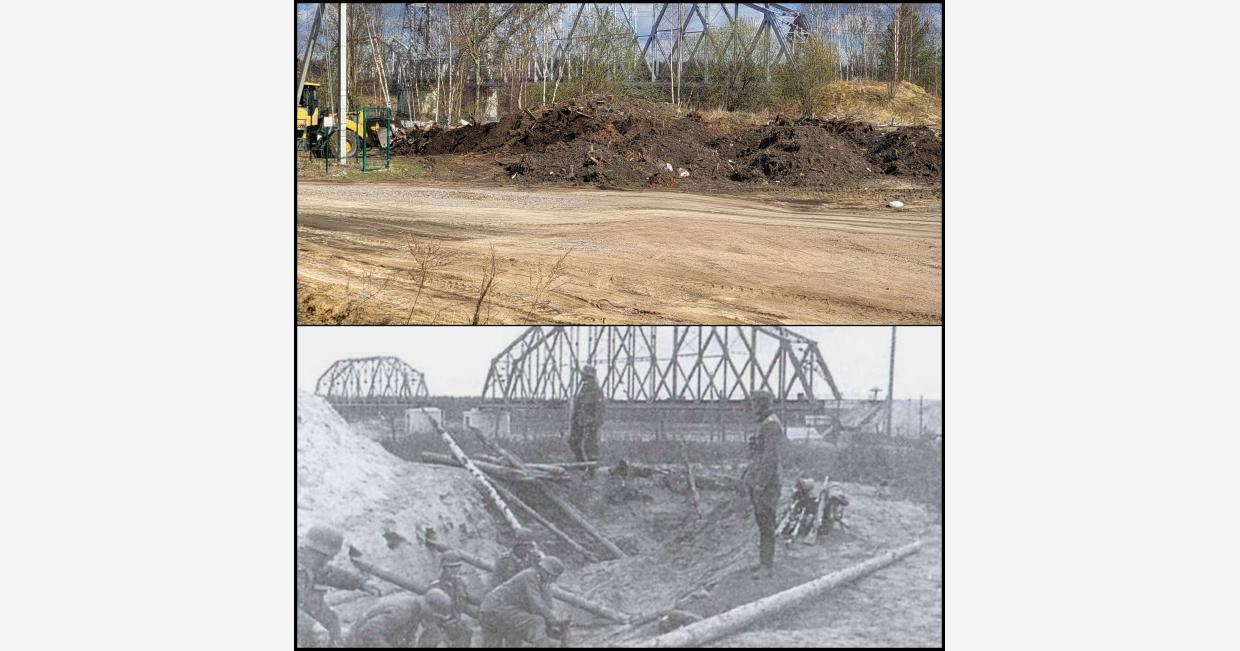Western outskirts of Pavlovo village, mid-September 1941 / Western outskirts of Pavlovo village, April 2022
German troops building fortifications on the left bank of the Neva River.
On this day, August 30, 1941 German troops approached the left bank of the Neva River, capturing the village of Ivanovskoye. The German advance was so fast and unexpected for the High Command of the Leningrad Front that they learned about it from the phone call of an unknown girl, who managed to connect with the headquarters barely a minute before the cable was cut off. Still being incredulous about the news, the Front Commander Markian Popov ordered to send two speedboats up the river to reconnoitre the area. Both were promptly sunk by 88mm guns promptly deployed on the embankment. While up to this day there was at least a vague hope of delivering barges with supplies to Leningrad across the Ladoga canals and then the Neva, the only route of delivery that remained was to use the canals from Novaya Ladoga and then a ferry crossing in Shlisselburg from which goods could be shipped to the city via a railroad. However, next week Shlisselburg would be captured and the only way to feed the city was to send old rickety barges across a highly dangerous lake in the season of storms to the coast where neither ports nor harbours existed. The work on building a port and a base in Osinovets would start only on September 9th, which was already too little and too late for a city of 3 million people with one month's worth of flour supply remaining in its warehouses.
On this day, Commander of Army Group North Ritter von Leeb, wrote in his diary: "Saturday, August 30, 1941. 20th Motorised Division reached the Neva near Ivanovskoye. This way, we've prevented the Russians from extricating their naval ships from Leningrad to Archangelsk via the Ladoga lake. At the same time, in the area of Mga we interdicted the third and the last remaining railroad which leads to Leningrad from the southeast. This means Leningrad was truly encircled".
The German control of the river bank was also fraught with dire consequences for the strategic military situation of the Red Army around Leningrad. Beside several poorly armed and untrained "extermination battalions", rear area guard units, there were practically no troops on the other side of the river, nor were any fortifications of note built in the east of the city. Had the Germans managed to force a crossing, a strike at the Soviet rear with an even minor force could have resulted in a complete catastrophe. Within barely 8 kilometres north-east of Ivanovskoye, near the village of Pavlovo, there was an intact railroad bridge which the High Command of the 39th Army Corps considered the best site to capture a bridgehead. However, the 122nd Infanterie Division, which was assigned this mission, encountered stiff resistance from the 1st NKVD Division which had been sent from Leningrad across that very bridge to recapture Mga earlier on that day. After more than a week of fighting along the river bank, the 1st Rifle Regiment retreated to the left bank of the river in good order, evacuating all its remaining equipment and wounded soldiers. For skilful leadership and timely demolition of the central section of the bridge after the retreat on September 8th, the regiment's commander Alexander Tarashkevich was awarded the Order of the Red Banner. A couple of months later, another section of the bridge was blown up by Soviet engineers to deny the use of the bridge to the enemy for good.
